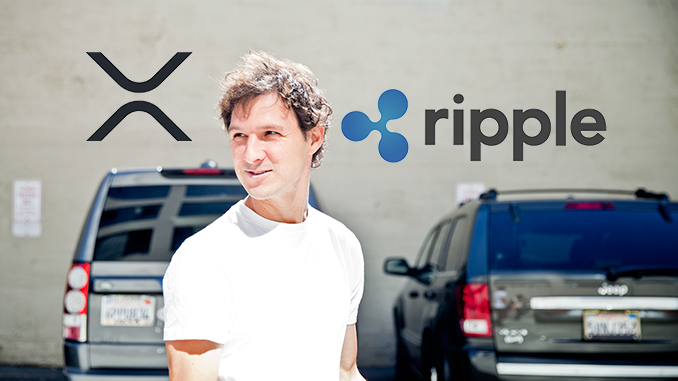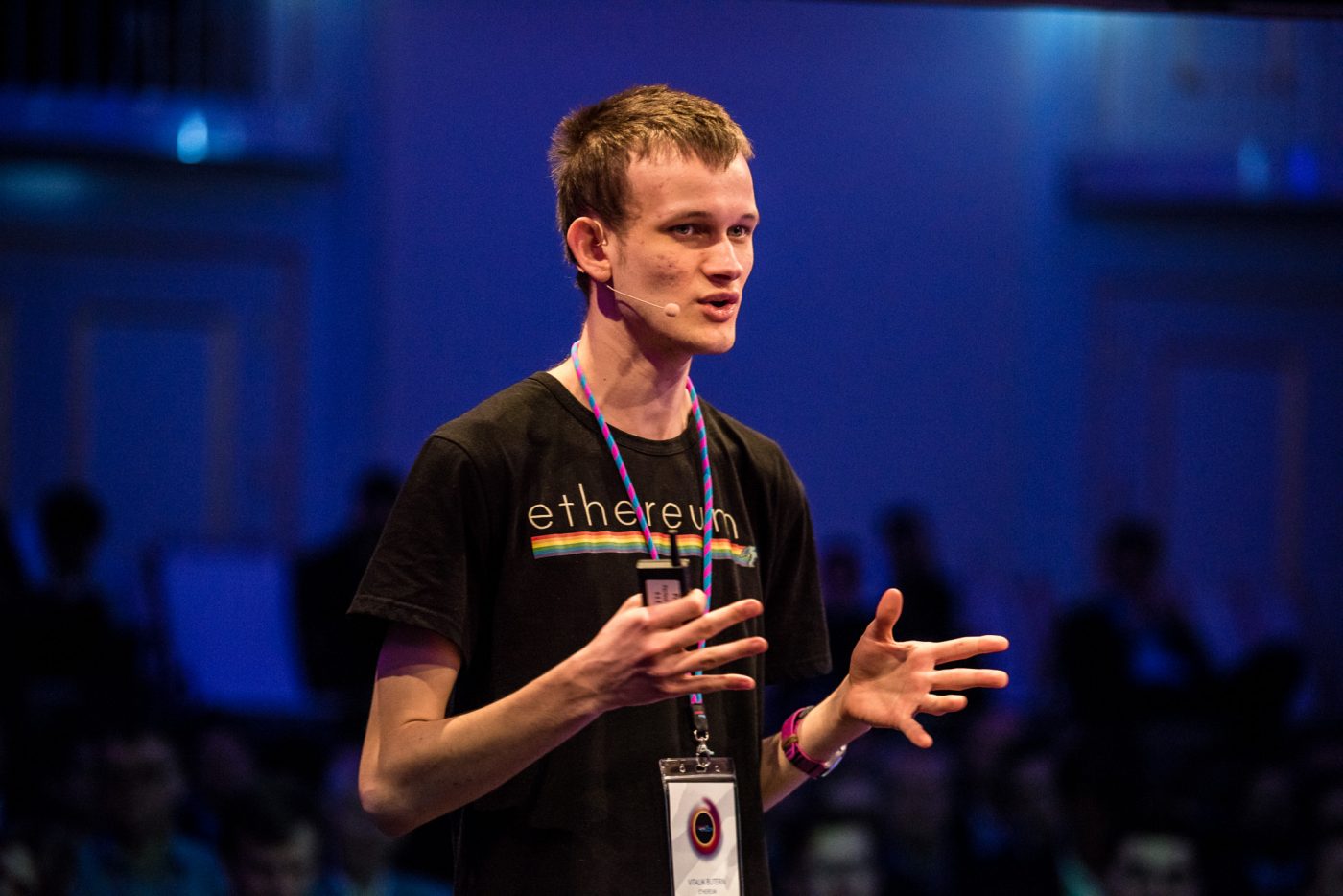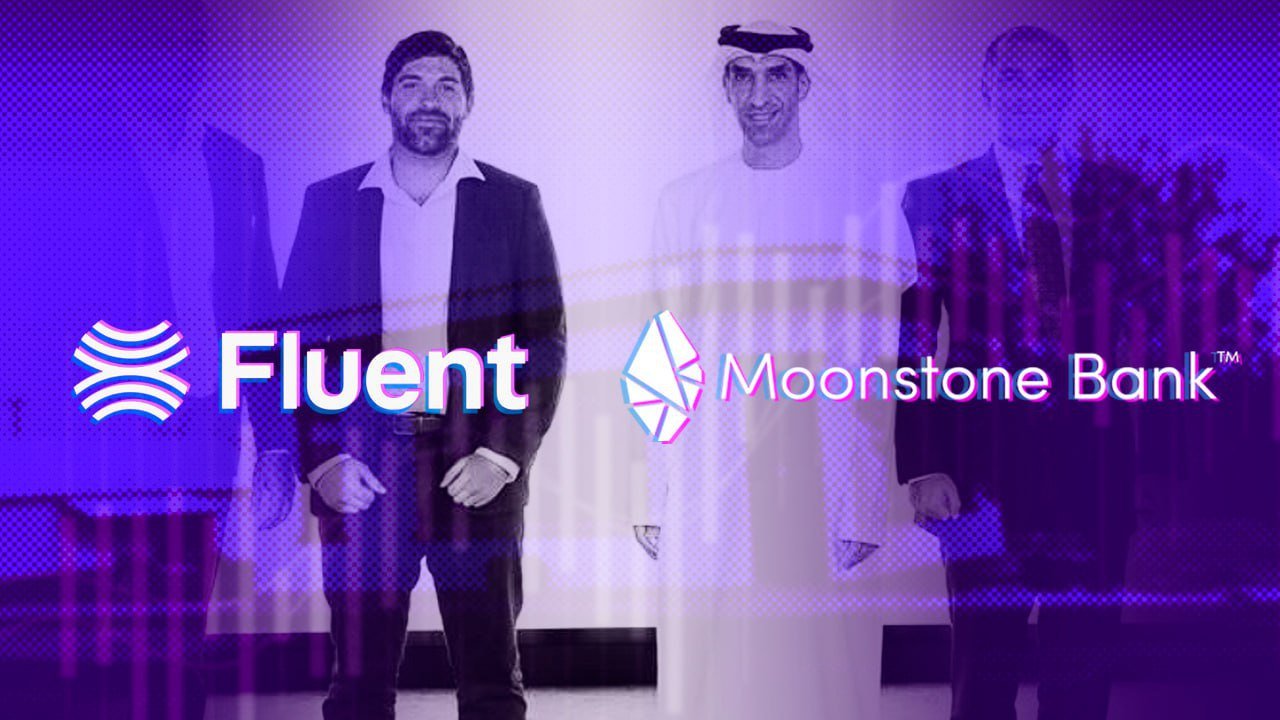Idris Elba stars in a promotional video for Stellar’s “Real World” campaign, where he touts Stellar’s more “equitable” vision of finance, a future where opportunities are “borderless.”
“If ideas are borderless, opportunities should be too,” A-list actor Idris Elba recently exclaimed in a video for cryptocurrency player Stellar’s “Real World” campaign.
In the elaborate promotional video featuring Elba, traditional currencies are portrayed as unreliable and especially detrimental to marginalized people. An immigrant, working class-coded woman in the video asks, “I can send money to my family, but how much will arrive?” Meanwhile, an older man counting his paper monies in the video says “[t]he more I save, the more I feel unsafe.”
Presenting itself as the solution to such problems, the Stellar network promises to make opportunities “borderless,” helping the video’s characters to save and send money to others without the traditional financial system’s various obstacles.
Indeed, Stellar’s “Real World” campaign portrays the Stellar protocol as an agent for dignified opportunities, making the financial system work for all. And, generally, many cryptocurrency and bitcoin enthusiasts put stock in such networks because they see them as a medium that ensures financial freedom. But Stellar, like other altruistic-branded financial organizations in the crypto space, is getting involved in other projects that suggest “financial inclusion,” as most would understand it, isn’t their biggest priority. A prime example is Stellar’s intense interest in facilitating the rise of Central Bank Digital Currencies (CBDCs), which are a programmable, central bank-issued digital version of a country’s fiat currency.
While CBDC proponents tout them as fast, convenient, and ideal for cheaper international transactions, Unlimited Hangout has previously elaborated on CBDCs’ propensity to undermine anonymity, foster surveillance and even, in terms of programmability, be used to enforce policies or otherwise be weaponized to manipulate or control peoples’ financial activities and behavior. If rolled out on a wider scale and introduced in tandem with other tools, like Digital IDs, UH contributor Iain Davis and UH contributing editor Whitney Webb (among others) have posited that CBDCs could “be used to monitor our whereabouts, limit our freedom of movement and control our access to money, goods and services.”
With nation states fearing that falling behind in digital currencies could compromise their competitiveness or sovereignty, the CBDC race feeds itself, thus bypassing critical public discussions around CBDCs’ potential societal harms. As per the Atlantic Council’s CBDC tracker, 130 countries representing 98 percent of the world’s GDP are now exploring a CBDC. Juniper Research recently estimated that the global value of CBDCs will jump from around $100 million today to $213 billion by 2030.
Naturally, as interest in CBDCs proliferates, so have CBDC pilots involving both the public and private sectors. In the process, a myriad of elite-gilded and blockchain-powered digital payment networks and organizations, including Stellar, Ethereum, Ripple and/or the people and forces behind them, are vying for their technologies and payment systems to be incorporated into the developing digital currency infrastructures of tomorrow.
As we shall see, these organizations’ collective facade of inclusivity and altruism obfuscates their true nature as elite-backed or otherwise compromised groups helping centralize, digitize, and even possibly program or otherwise weaponize money in ways unaccountable to traditional policymaking processes and the public, thus bringing them immense power while helping facilitate what could functionally amount to a financial digital control grid.
The CBDC Pilot Race
As the CBDC race heats up, major players in the crypto world are playing key roles in ongoing CBDC pilot projects globally. While many crypto players are interested in facilitating CBDCs, I will focus on Ripple, Stellar, and Ethereum, all of which are blockchain-based platforms being utilized in multiple CBDC pilots, for the purposes of this article.
Blockchain, a distributed digital ledger technology system, is known for its ability to securely store information and transaction records. Key to the functioning of cryptocurrencies, blockchain is often described as a cornerstone for the Fourth Industrial Revolution, an ongoing and controversial technological revolution popularized by elite-gilded groups like the World Economic Forum, Deloitte, and Ernst & Young, that seeks to blur the boundaries of the physical, digital, and biological spheres.
Originally founded in 2012 as OpenCoin, Ripple is a blockchain-based digital payment network and transaction protocol that facilitates the cryptocurrency XRP, one of the world’s most popular cryptocurrencies. According to its X/Twitter profile, Ripple’s mission is to “build breakthrough crypto solutions for a world without economic borders.”
Developing a CBDC platform for central banks to use, Ripple is “in talks” with over a dozen governments for the purposes of CBDC development. Namely, Ripple is or has participated in CBDC pilots for Montenegro, Palau, Bhutan, and Colombia. It was also tapped to facilitate the National Bank of Georgia’s CBDC pilot. Ripple website visitors will additionally find extensive efforts to promote the protocol’s CBDC capacities, which emphasize the platform’s “stability, security and resilience,” accessible and sustainable nature, and potential for interoperability.

A 2014 Ripple spinoff and rival, Stellar is a public open-source decentralized blockchain network run by the non-profit Stellar Development Foundation (SDF), which operates Lumens (XLM), Stellar’s cryptocurrency. “Built with CBDCs in mind,” Stellar has created a guidebook for policymakers about CBDCs, as well as a whitepaper that explains how Stellar in particular is up to the task of CBDC facilitation. As I had noted in a previous UH report, “SDF’s mission is to strive towards ‘global financial inclusion,’ a buzzword elite groups like the World Economic Forum and the International Monetary Fund have used to garner support for and participation in the CBDC paradigm.”
As I noted in previous UH reporting, Stellar has participated in CBDC pilots in Ukraine and Australia, and is developing a Brazilian CBDC in collaboration with Mercado Bitcoin. The German bank Bankhaus von der Heydt, meanwhile, selected Stellar to help develop a prospective European stablecoin.
Created by Vitalik Buterin in 2014, Ethereum is a prominent decentralized blockchain network known for its smart contracts, which are programs or protocols designed to facilitate or execute a desired action when the given preconditions (the “contract”) are met. Also a major contender for CBDC pilots, Ethereum has been used in CBDC pilots for Australia, Norway, Israel, and even MasterCard. Moreover, an Ethereum-based stablecoin pilot issued by the Palau Ministry of Finance and “fully backed by USD cash balances” is currently ongoing in Palau.
Ethereum differs from Stellar and Ripple in that, as per Ethereum’s webpage on Ethereum governance, no one owns or controls the Ethereum protocol, and there are no limits or rules as to how the protocol can be used. Therefore, Ethereum itself isn’t advocating for a role in CBDCs or CBDC pilots. As I will discuss, however, the Ethereum protocol has been compromised in significant ways, and as such many elite players promote it as a protocol fit for purpose in the larger CBDC project, or for other goals they may have in the financial space.
In any case, as the CBDC race heats up, crypto players’ rapid uptake of CBDC and adjacent pilots indicates their foot is on the gas.
Crypto for Good?
Major crypto players depict their CBDC–related efforts as strides toward an often “borderless” paradigm characterized by financial inclusion, equity, sustainability and modernity in an increasingly digital world. In reality, they are more interested in having a major stake in, or even control over, the money of tomorrow.
In this respect, the Stellar Development Foundation’s establishment as a nonprofit organization is notable because the designation positions the project as beneficial to the public from the get-go. Stellar’s “Real World” campaign that I previously highlighted is another organizational effort to appear as financially “inclusive” and even humanitarian. Last year, Stellar collaborated with the United Nations High Commissioner for Refugees (UNHCR) to provide humanitarian payments to those impacted by the war in Ukraine through an “integrated blockchain payment solution,” where the UNHCR distributed funds using Circle Internet Financial’s USD Coin (USDC), a prominent dollar-pegged stablecoin, to recipients’ Vibrant digital wallets, which are built on Stellar’s blockchain, on their smartphones.

Stellar’s “financial inclusion” fixation is only par for the course. Likewise, Ethereum’s messaging portrays its work as a “community-run,” grassroots effort, with the Ethereum website describing its work as a decentralized finance (DeFi) system. Positioning itself as an antithesis to the traditional financial system, which it describes as inaccessible and discriminatory, the Ethereum Foundation describes Ethereum as a “protocol for human coordination.”
“Our vision for Ethereum,” it claims on its website, “is the Infinite Garden,” that people must tend to, nurture, grow, and “continue to play.” Likewise, the Foundation’s philosophy page emphasizes decentralization and a philosophy of subtraction, where “we attempt to subtract our power and resist the natural tendency of organizations to grow and accumulate power.”
According to its 2022 “Fintech for good” report, meanwhile, Ripple’s donated about $170 million towards “philanthropy” since 2018, committing $100 million to “scaling carbon markets,” and $25 million to “NGOs working to make global financial services more inclusive and equitable.” Indeed, Ripple describes its business model as eco-friendly and “on track to achieve carbon net zero by 2030 or sooner through reduced emissions, clean energy use, and large investments in innovative carbon removal projects.”
Moreover, Ripple has previously collaborated with the Bill and Melinda Gates Foundation on financial inclusion initiatives that are part and parcel of the political elite looking to influence or dominate the financial system. While billionaire Bill Gates himself may not own any crypto, the Bill and Melinda Gates Foundation is intensely interested in adjacent technologies, allegedly for the purposes of “financial conclusion.”
The Bill & Melinda Gates Foundation-backed Mojaloop, in fact, is an open-source payment platform aimed at driving financial inclusion. Ripple, a Sponsor member of the Mojaloop Foundation, built Mojaloop’s Interledger Protocol. The organization also has a Center of Excellence for CBDCs, which Ripple participates in with players including the Bill & Melinda Gates Foundation, Coil, Google, ModusBox, and the Monetary Authority of Singapore (MAS). The Ripple-supported Mojaloop participates in the Level One Project, a Gates Foundation initiative that “proposes a new low-cost payments system that supports inclusive, interoperable digital payments.”
Ultimately, crypto players’ altruistic exteriors deserve scrutiny. As academic Olivier Jutel writes, crypto’s “blockchain humanitarianism” strives to legitimize what is really an “intensification of the South-to-North extraction of value via solutionism and blockchain platforms,” i.e. a modern iteration of colonialism.
Simultaneously, the crypto industry’s major investments and efforts under the guise of “financial inclusion” must be understood as an attempt to secure influence and/or control over the world’s financial infrastructure. Indeed, the political class has a track record of using talking points like “equity” and “protecting the environment” to push top-down, sweeping policy initiatives slated to deplete traditional policymaking processes in favor of opaque global governance structures, where infrastructure previously facilitated by states is increasingly swallowed up by corporations, corporate-dominated public-private partnerships, and other organizations and institutions unaccountable to the public.
That crypto players like Ripple and Stellar use similar language while simultaneously pushing for increased stakes in the future financial system signals that they are not detractors from the elites’ goals for the financial system: instead, they are advancing their cause.
Crypto as an Elite Endeavor
Crypto players’ elaborate marketing tactics and philanthropic efforts either show a false good will or benevolence that obfuscates their true interest in CBDCs, or otherwise signal their alignment with the political class’ goals.
Indeed, Stellar, Ethereum, and Ripple’s elite connections, including the World Economic Forum (WEF), the Bill and Melinda Gates Foundation, and others, are extensive. Ripple Co-Founder Chris Larsen, for starters, is a WEF agenda contributor, and prominent Ripple leaders, including CEO Brad Garlinghouse, have made Davos appearances.
Meanwhile, Stellar Co-Founder Jed McCaleb has an extensive and tarnished history in the crypto space. In fact, he, with Larsen, had founded now-competitor Ripple, with McCaleb departing after a failed attempt to oust Larsen from the company. Then Ripple board member Jesse Powell subsequently sent McCaleb an email explaining the board’s mistrust of McCaleb’s leadership practices:“[t]he Stripe deal sucks; employees don’t trust you as a leader/manager; you hiring your girlfriend [Joyce Kim] indicates you have poor judgment.” Indeed, McCaleb had brought on his then girlfriend Joyce Kim, much to the annoyance of his colleagues at Ripple.

(The “Stripe deal” Powell refers to a failed attempt by payments company Stripe to buy out Ripple in 2013. While at Ripple, McCaleb had facilitated negotiations with Stripe because, according to Michael Craig’s 2015 reporting in The Observer, he was looking for an exit from Ripple because his girlfriend had no real role at or future with the company.)
After leaving Ripple, McCaleb and Kim launched Stellar, thus establishing a kind of rivalry between the two organizations (Kim subsequently left Stellar in 2016). Ripple and Stellar are known for their curiously similar interfaces; Michael Craig reported in 2015 that some of Stellar’s code was clearly shoplifted from Ripple, noting “at least 177 instances” where Stellar’s code matched Ripple’s. “In its haste to get its currency established,” Craig explains, “Stellar simply copied [R]ipple’s open-source code but evidently its search-and-replace missed many instances where the code still says ‘ripple.’”
Many of McCaleb’s previous (and once wildly successful) projects, including file-sharing site eDonkey2000 and bitcoin exchange Mt. Gox, have gone belly-up, with McCaleb previously facing lawsuits over allegedly fraudulently misrepresenting Mt. Gox’s security issues to the public. Despite this, McCaleb’s sights are on the stars, quite literally. In 2021, McCaleb founded and, at the time of writing, is fully funding Vast, a startup whose mission is to “contribute to a future where billions of people are living and thriving in space.” It aims to launch a private space station, Haven-1, into space with “opportunities for lunar artificial gravity.” Vast is collaborating with Elon Musk’s SpaceX for the project, where SpaceX’s Falcon 9 rocket is set to launch Haven-1 in August 2025 or after.
Meanwhile, Jed McCaleb has founded the Astera Institute, which focuses on technology and science projects that have the “capacity to create transformative progress for human civilization.” The Astera Institute works on projects including neuroscience-focused Artificial General Intelligence (AGI), where McCaleb and team suggest further study of the brain will better inform the building of adaptive Artificial Intelligence and interventions to “disrupt” aging processes.
McCaleb is also helping out his new romantic partner, Seemay Chou, by providing seed funding to her $500 million bio-firm Arcadia Science, a for-profit science institute founded under the premise that “we could invest in a new way of doing science.” Chou is Arcadia’s CEO and Co-Founder; Jed McCaleb is listed on Arcadia’s website as a Co-Founder and Advisor to the CEO. Breaking away from standard scientific conventions, Arcadia will not collaborate with universities or publish in traditional scientific journals. Rather, it plans to do exploratory research that can then be spun off into startups. McCaleb and Open AI CEO Sam Altman are Arcadia’s two unicorn investors.
Altogether, Jed McCaleb’s grandiose efforts and funds in multiple spheres — money, space, and even anti-aging — suggest strides to direct not just the future of currency but the future of science and technology. Despite multiple major business failures, McCaleb apparently thinks he can, and has the right to, play God.
McCaleb’s messy reputation and megalomaniac aura perhaps explain why Stellar CEO Denelle Dixon is usually the one doing Stellar’s public engagements. However, McCaleb’s far from the only questionable person on staff. Dixon herself is a World Economic Forum Agenda Contributor.

In addition, Stellar’s Board of Advisers includes Peter Thiel-backed Founders Fund’s Keith Rabois, Open AI CEO Sam Altman, and Stripe CEO Patrick Collison, all prominent players in the tech world’s inner core.
Furthermore, the Stellar Development Foundation is a supporter of the World Economic Forum’s Humanitarian and Resilience Investing (HRI) Initiative, theoretically created “to unlock social impact investing in frontier markets” to help and increase the resilience of marginalized and crisis-impacted communities. However, impact investing, especially when pushed by an elite organization like the World Economic Forum, cannot be interpreted solely as a humanitarian endeavor. Instead, the phenomenon implies influence over “beneficiary” communities’ and groups’ affairs, stripping them of sovereignty.
Interestingly, Ethereum founder Vitalik Buterin has voiced concerns about CBDCs as of late, saying in a September 2023 interview with CNBC that, while government-issued digital currencies can provide convenience, “[t]hey end up being even less private and basically break down all of the existing barriers against both corporations and the government at the same time.” Buterin also told TIME Magazine in 2022 that “[c]rypto itself has a lot of dystopian potential if implemented wrong.”
Simultaneously, Ethereum’s “proof of work” to “proof of stake” blockchain verification system switch, or “merge” in 2022, centralized the protocol’s technology. Whereas decentralized computing “work” validates the cryptocurrency network in “proof of work,” “proof of stake” shifts this validation responsibility over to stakeholders, granting them tangible leverage over the network.
In theory, the “merge” was executed for environmental reasons: Ethereum’s website highlights that the switch to proof of stake slashed Ethereum’s energy consumption by about 99.95%. In fact, the merge was apparently priming Ethereum for further regulatory capture. As a recent JP Morgan report put it, the “concentrated number” of stakeholders precipitated by Ethereum’s 2022 merge could theoretically “collude to create an oligopoly that would promote their own interests at the expense of the interests of the community.” JP Morgan’s JPM coin, a digital dollar created by the bank, notably runs on a private version of the Ethereum blockchain and the bank also owns a large stake in critical Etherum infrastructure.
Indeed, a small number of stakeholders appear to be swallowing up significant stakes in Ethereum: even before the merge, crypto exchanges Coinbase, Kraken and Binance had together accounted for over 20% of the total staked ETH. At the time of writing, moreover, liquid staking solution Lido Finance holds roughly ⅓ of the total stake. Meanwhile, multinational investment giant Blackrock’s recent filing to launch an Ethereum-backed Exchange Traded Fund (ETF), only shows that the world’s most powerful players are moving to use the protocol for their ends.
Buterin may have concerns about CBDCs and Ethereum’s prospective role in them, but the protocol is ultimately a creature he has diminishing control over. “I feel like my influence in Ethereum keeps decreasing every six months. I have less now than I did six months ago,” Buterin said in an April 2022 interview. “Six months ago, I had less than I had a year ago. And a year ago, I had less than I had 18 months ago.”
Meanwhile, Buterin’s colleagues don’t seem to share his concerns. Ethereum Foundation Executive Director Aya Miguchi, also a WEF Agenda Contributor, is on the Davos-launched and elite-gilded Global Blockchain Council, which has collaborated with the WEF in the past on issues including crypto-asset regulations.

And Ethereum’s co-founder, a lawsuit-plagued Joe Lubin, has founded prominent blockchain company and start-up incubator ConsenSys, which runs on Ethereum and is deeply tied to JP Morgan, proposes in its public materials that Ethereum is the platform most suited to CBDCs’ needs, and has even run its own CBDC trials using Ethereum. (Meanwhile, there’s speculation that Lubin holds 5% to 10% of the total Ether in circulation.)
Zooming out, crypto players’ collective activities and messaging suggest strides towards securing significant leverage over today’s financial system. Stellar, for example, often describes its work as part of a broader effort towards establishing a “global payment standard.” Depicting Stellar’s work as consequential to society as the establishment of the internet, Jed McCaleb previously told CNBC that:
What we’re trying to build at Stellar is an internet-level protocol. And I think it’s important that that be done by a non-profit entity. Like if you imagine the internet created by a for-profit company, we would just be in a very different world…And [for this purpose] you kind of just need…governance and structure that wasn’t really done in ripple.
McCaleb seems to think slapping the “non-profit” label on Stellar makes its work neutral, or otherwise absolves the organization from scrutiny, despite the weight he assigns to Stellar’s prospective societal impact. Likewise, a now-deleted 2016 article from Ripple, “The Road to Davos: Ushering in the Fourth Industrial Revolution,” explicitly discusses Ripple’s prospective role in developing a “global standard for payments” as part of the larger Fourth Industrial Revolution:
As the only distributed financial technology company invited to attend Davos this year, Ripple is undertaking one of the first tasks of [the Fourth Industrial revolution]: building the infrastructure. All of the outcomes the WEF predicts rely on not only interoperable global systems for messaging and communication, but for an equally seamless system for the transfer of value. Financial inclusion and economic growth are currently trapped in the same bottleneck; the technology exists but cooperation and regulation hold it back.
It is to this problem that we apply our solutions. If the world had a global standard for payments, it could lead to stronger and more inclusive economies, reducing inequality and inaugurating what Deloitte projects will be a period of exponential growth.
As the language used in the quote suggests, elites are using their professed goal of “financial inclusion” to mask their real one, which is the widespread implementation and interoperability of digital currencies. Furthermore, while the above quote emphasizes that a global payment standard will improve economies and livelihoods, it neglects to mention that developing and having ownership over a “global standard for payments” or adjacent financial infrastructure would put Ripple in an authority position over the financial system’s future, perhaps making it more powerful than traditional state actors.
Stepping back, intelligence ties to and interest in crypto are ripe for questioning. Cryptocurrency adjacent Bitcoin’s Secure Hash Algorithm (SHA) 256, which makes it so secure, was actually designed by mathematician Glenn M. Lilly under the NSA’s direction, before Lilly became the NSA’s chief of mathematics research. (However, the SHA was made public in 2001, long before Bitcoin was launched). Many years later, CIA Director William Burns confirmed his agency has initiated “a number of different projects focused on cryptocurrency” in December 2021. Former CIA Deputy Director Michael Morell also wrote alongside Josh Kirshner and Thomas Schoenberger at Beacon Global Strategies that “[b]lockchain technology is a powerful but under-utilized forensic tool for governments to identify illicit activity and bring criminals to justice,” even highlighting a cryptocurrency expert’s claim that blockchain is a “boon for surveillance.”
While the extent of US government involvement in cryptocurrency development merits further investigation, intense government interest in the technology is clear: the CIA opened a research lab to study blockchain in 2020. On a global scale, the World Economic Forum’s released an extensive whitepaper series to advise policymakers on digital currencies, also creating a Digital Currency Governance Consortium to discuss and construct policy frameworks for governance of digital currencies. In such efforts, the WEF frequently upholds public-private cooperation as critical to success, even though private corporations and groups are unelected and therefore unaccountable to the public.
Ultimately, within the context of significant crypto involvement in CBDC pilots, the circumstances force speculation as to whether elite interest in crypto is actually about using the private sector to develop and perfect digital financial infrastructure that governance structures can then subsequently utilize for CBDCs.
Financial Inclusion or Control?
Ultimately, crypto players’ elite composition, affiliations and publicly-expressed intentions to set digital financial industry standards showcase their intense interest in obtaining power over the financial system. As such, their participation in CBDC development only suggests an effort to ensure their infrastructure is cemented in the tech facilitating the worlds’ financial transactions. This must be understood as a power grab in its own right.
What’s more, CBDC pilots, where private players’ technologies are being utilized for critical CBDC infrastructure, demonstrates that CBDCs are fundamentally public-private concoctions, where sketchy, elite-gilded groups facilitate the tech underpinning the digital currency partially or fully imposed on the wider population in the event of global CBDC rollouts: a full fledged, perhaps permanent union of the state and the corporate world. Crypto players in the CBDC race are only driving the point home, with payments giant Stripe encouraging the US Federal Reserve “to fully leverage the expertise of the private sector” in the process of CBDC development.
Critically, major crypto players’ intense interest in CBDCs, even though a widespread CBDC rollout could theoretically jeopardize their future, forces speculation as to whether cryptocurrencies were developed as a kind of precursor to, or testing ground for, CBDCs, where the technologies needed for a central bank-issued digital currency could first be tested out and perfected in the private sector before coming under the complete dominion of central banks.
Even in the event that CBDCs don’t go ahead, adjacent technologies, like stable coins, are also being advanced by crypto players for similar purposes. Indeed, country-led stablecoin pilots like Palau’s and adjacent efforts, including fintech company Circle’s United States Dollar-pegged USD Coin (USDC), signal that, rather than facilitating CBDCs themselves, governing bodies could collaborate with private companies that instead issue and facilitate stablecoins on their behalf. Such stablecoins could ultimately enable the same programmability and surveillance concerns CBDCs pose to the public, but would instead be operated by the world’s wealthiest bankers and financiers rather than the central banks.

Meanwhile, touted by JPMorgan as no less than “a new financial services paradigm,” deposit tokens are like a digital version of the deposited money in a person’s bank account, but programmable and facilitated through a blockchain based-ledger. If universalized, digital tokens could mean money held in commercial bank accounts could also likely become programmable — at the whim of the banks.
Moreover, the consistent obsession with “borderlessness” plays conveniently into the hands of a power elite looking to undermine traditional policymaking processes and whatever sovereignty traditional nation states still have in the modern era under the guise of equitability, inclusion and humanitarianism. In this respect, it appears the current financial system, where nations operate their respective fiat currencies, could be undermined by global governance efforts via CBDCs’ interoperability amongst states. Amidst “inclusivity”-driven pushes for interoperability, it’s not hard to imagine CBDCs becoming interoperable to a point where only a few or even one global digital currency, of course operated by the power elite, could become the norm.
Ultimately, by simultaneously driving CBDCs and adjacent projects forward, crypto players like Ripple, Stellar, and Ethereum demonstrate they (or those who have influence over them) care little about financial inclusion, privacy, or freedom. Rather, their goal is to have a stake in, or even control over, the future global financial system.











In the 70″s in New York, Ripple was the cheapest bottle of wine a wino could buy.
I remember early on Stellar had partnered with IBM on several of their products. This was in 2017 or so. From that relationship one could draw many correlations to the subject’s topic such as Hyperledger’s role in the development of CBDCs. Notably, IBM has played an integral role in the development of the blockchain protocols within the Hyperledger ecosystem which is not exclusive to CBDCs. Some may recall the now defunct Excelsior Pass, for instance.
Things get a lot more messier when the Linux Foundation is scrutinized.
https://www.hyperledger.org/hyperledger-cbdcs
https://www.ledgerinsights.com/new-york-goes-live-with-ibm-health-passport-statewide/
This is exactly what i was looking for. I swear there was a series of 4 articles either on Unlimited Hangout or Whitney Webb herself, one of which covered the role of Linux Foundation in the CBDC rollout. I can’t find it anywhere online now though. This was precisely the source information I was looking for and it is still available on archive.org. https://web.archive.org/web/20231223110449/https://www.linuxfoundation.org/hubfs/Hyperledger_CBDC%20ebook_V2.pdf?hsLang=en
The US central bank is working on developing their own digital currency for total control. The regulatory pressures put on non-governmental crypto will cripple them so greatly that there will be little point or advantage to using them. The power struggle mentioned in this article is mostly for turd world payment systems.
Pabst, Unless we build a parallel system that works on the ground, all of the intellectualizing in the world is pointless. Spend your brain power on that.
Thank you for monitoring and reporting the disturbing trends around the world to dominate human beings and limit personal freedom.
It’s almost unbelievable had it not been forecast thousands of years ago in the book of Revelation. Only recently have humans gained the technological know -how to enable them to create a pseudo- omniscient, omnipotent, and Omni-present form of domination. Lucifer’s age old quest to replace the Creator and enthrone himself in his place and to use mankind to do so , still burns within the great decievers mind.
Refuse the mark when it comes. Trust and obey Christ today!
I see no signs that the current Secular Ruling Families will lose CONTROL & OWNERSHIP of Their MONETARY SYSTEM (doesn’t matter if physical or digital).
If we persist in behaving like good coward and meek modern moron slaves They, with the help of Billionaires, will do whatever THEY DESIRE.
This type of article in reality means nothing in the Great Scheme of our Civilization… because the herds of modern moron slaves won’t do anything to destroy the current Civilization were they so gladly slave around.
The same pattern persists with social media, cryptocurrency and surveillance systems, gather personal information and sell it to the highest bidder, be that corporations or governments, with the goal to control your spending/actions to make these players more wealthy. If everyone decided limit the personal information they provide, these places would not find fertile ground on which to operate.
Well researched and informative article warning of the enormous potential for CBDC as tool for control and abuse of power. Justin Trudeau, Canadian Prime Minister, gave us a practical demonstration of this potential when he completely starved protesting truck drivers and their supporters of their access to money. Trudeau takes inspiration for this practice from China. The power of isolation, subjugation and punishment is ultra swift and ruthless. Unfortunately, even those aware of the danger cannot give up their addiction to the very means by which they are being enticed, groomed and primed for the new matrix, their smart phones. On the whole, technology is good or evil depending on users. The problem is not the tool but human consciousness. This reminds me of the Sweet Dreams song of Annie Lenox in which she says “some people want to use you and abuse you, some people just want to be used and abused”.
I agree with all of you, these are demonic schemes; what is the solution to remain free?
I’m having a mini mandella effect full with residue. I distinctly remember this article or one of the other articles in this series referencing “Linux Foundation” or “Ubuntu Foundation” as being tied to the the roll out of digital ID or digital currencies, as they were prepping the operating system to support some form of open ID. Now searching Unliited hangout entirely for “Linux Foundation” or “Ubuntu Foundation” shows up no article. I thought I was just miss remembering it and it must have been on a different website or something. So as one last ditch effort I tried google hoping it would have a cached version perhaps and it turned up part of the quote I was looking for in reference to this page. “`As CBDCs Roll Out, Elite-Backed Digital Payment Systems …
Unlimited Hangout
https://unlimitedhangout.com › Sample Page
Dec 28, 2023 — Things get a lot more messier when the Linux Foundation is scrutinized. https://www.hyperledger.org/hyperledger-cbdcs · https://www …“` But yet on this site there is no reference to Linux Foundation. So I got curious and thought maybe it was a typo and you guys removed it from the article so I went ot archive.org. But none of the references on archive.org show “Linux Foundation” either. So apparently it was never in the article. Except Google has some “residue” indicating something was at some point. With mandella effects Google is well known for having “residue” references to old reality data in it’s cache. For my curiousy can you just comment on if Linux Foundation ever officially existed in this article or any other article concerning CBDC on this site?
I found the article I though I remembered that detailed the linux foundations involvement in the digital ids and block chain tech. It was actually by CoreysDigs, sorry for my confusion.
https://www.coreysdigs.com/technology/the-global-landscape-on-vaccine-id-passports-part-4-blockchained/